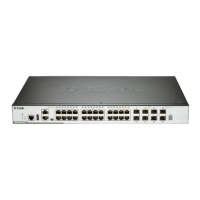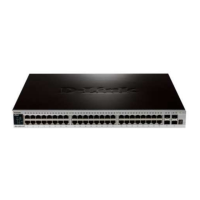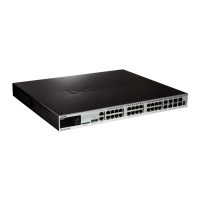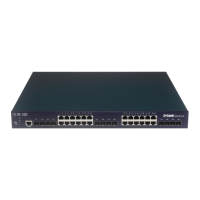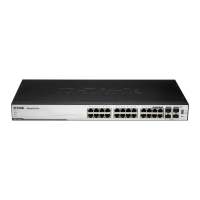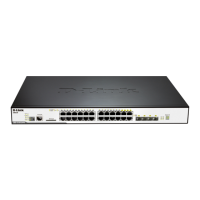DGS-3630 Series Layer 3 Stackable Managed Switch Web UI Reference Guide
559
Parameter Description
Max PDU Length
In this field the LDP maximum PDU length value will be displayed.
Initial Backoff
Enter the initial back-off delay time here. The LDP back-off delay time is a
mechanism to prevent an endless sequence of session setup failures that occur
between two LSRs with incompatible settings. The range is from 15 to 65535
seconds. Select the Default option to use the default value, which is 15 seconds.
Max Backoff
Enter the maximum back-off delay time here. The range is from 120 to 65535
seconds. Select the Default option to use the default value, which is 600
seconds.
Transport Address
Enter the transport IPv4 address here. The transport address is used to establish
a LDP TCP connection. Select the Default option to use the default setting.
Selecting the Interface option specifies to use the IP address of the
corresponding interface as the transmission address for the session on each
interface.
Keep-Alive Time
Enter the keep-alive time value here. LDP maintains a keep-alive hold timer for
each peer session. If the keep-alive hold timer expires without receipt of an LDP
PDU from the peer, LDP terminates the LDP session. The range is from 15 to
65535 seconds. Select the Default option to use the default value, which is 40
seconds.
Link Hello Interval
Enter the link hello interval value here. The range is from 1 to 65535 seconds.
Select the Default option to use the default value, which is 5 seconds.
Link Hello Hold Time
Enter the link hello hold time value here. The range is from 5 to 65535 seconds.
Select the Default option to use the default value, which is 15 seconds.
Distribution Method
Select the distribution method here. Options to choose from are:
• DU - Specifies the downstream unsolicited distribution mode.
• DoD - Specifies the downstream on-demand distribution mode.
If the mode is configured as Downstream-on-Demand mode, the downstream
LSR advertises a label mapping when an upstream connection makes an explicit
request. If the mode is configured as Downstream-Unsolicited mode, the
downstream LSR advertises a label mapping when a label is learned in the
routing table.
Select the Default option to use the default setting, which is DU.
LSP Control Mode
Select the Label-Switched Path (LSP) control mode here. Options to choose from
are Independent and Ordered. In Independent LSP Control mode, each LSR
independently binds a label to a Forwarding Equivalence Class (FEC) and
distributes the binding to its label distribution peers. In Ordered LSP Control
mode, an LSR only binds a label to a FEC if it is the egress LSR for that FEC, or if
it has already received a label binding for that FEC from its next hop for that FEC.
Select the Default option to use the default setting, which is Independent.
Label Retention Mode
Select the label retention mode here. Options to choose from are Liberal and
Conservative. If the label distribution method is Downstream-Unsolicited and the
label retention mode is conservative, once the LSR received label bindings from
LSRs which are not its next hop for that FEC, it discards such bindings. If the
label retention mode is liberal, it maintains such bindings. It helps to speed up the
setup of LSP in case there is a change in the next hop.
Select the Default option to use the default setting, which is Liberal.
Loop Detection
Select to enable or disable the loop detection feature here. LDP loop detection
makes use of the Path Vector and Hop Count TLVs carried by the label request
and label mapping messages to prevent looping of LDP messages. If enabled,
LDP does not send the LDP message that violates the path vector check or hop
count check to next hop.
Path Vector Limit
Enter the path vector limit value here. The range is from 1 to 255. If loop detection
is enabled, the LDR ID that is in the path vector list of the label mapping message
or the label request message or the path vector length exceeds the maximum
length, then it is deemed that a loop occurs.
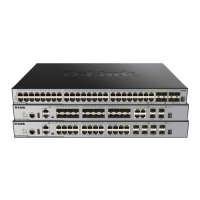
